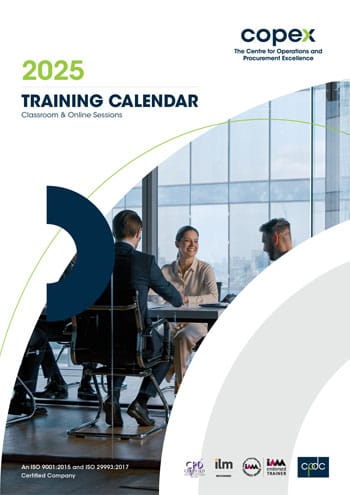
Common Decision-Making Biases and How to Avoid Them
4 mins readIn a world overflowing with data and fast-paced change, decision-making remains one of the most critical skills for leaders, managers, and professionals alike. However, even the most well-intentioned decisions can be skewed by unconscious biases—systematic patterns of deviation from rationality in judgment. These decision-making biases silently influence outcomes, reduce objectivity, and can lead to costly mistakes in both strategic and operational contexts.
Understanding common decision-making biases and how to avoid them is essential for effective leadership, especially in high-stakes or complex environments. Whether in government, corporate management, finance, or executive boards, the ability to recognize and mitigate these biases can vastly improve decision outcomes and long-term results.
This article serves as a complete guide to identifying prevalent cognitive biases in decision-making, their implications, and practical strategies to overcome them.
What Are Decision-Making Biases?
Decision-making biases are psychological tendencies that distort rational judgment. Rather than processing information logically, human minds often rely on heuristics—mental shortcuts that simplify decision-making. While heuristics can be helpful in routine choices, they may lead to flawed decisions in uncertain or high-pressure situations.
For example, when leaders rely solely on past successes or overvalue information that confirms their beliefs, they fall into a cognitive trap that skews objectivity.
Training through structured development such as the Leadership Decision-Making Course helps professionals identify and neutralize these influences through real-world exercises and strategic frameworks.
Top 10 Common Decision-Making Biases
-
Confirmation Bias
One of the most common biases, confirmation bias is the tendency to seek, interpret, and remember information that aligns with existing beliefs or hypotheses while disregarding contradictory evidence. This often reinforces poor decisions and blinds leaders to alternative solutions.
How to avoid it:
Encourage diverse opinions in meetings. Challenge assumptions openly. Use objective data analysis frameworks like those taught in the Complete Course on PESTLE & SWOT to incorporate external perspectives into your decision-making.
-
Anchoring Bias
Anchoring occurs when individuals rely too heavily on the first piece of information encountered—the “anchor”—when making decisions. This can affect everything from pricing strategies to performance evaluations.
How to avoid it:
Compare multiple data points before drawing conclusions. Adopt structured models such as those provided in the Strategic Decision-Making Models for Managers Course to ensure balance and context.
-
Overconfidence Bias
Leaders may overestimate their knowledge or the accuracy of their forecasts. Overconfidence can lead to misjudging risks or ignoring vital feedback.
How to avoid it:
Foster a culture of humility and continuous feedback. Decision simulations and scenario planning offered in the High-Level Decision-Making in Government Leadership Course provide tools to manage overconfidence effectively.
-
Status Quo Bias
People tend to prefer maintaining the current state of affairs, even when change could lead to better outcomes. This bias hinders innovation and proactive problem-solving.
How to avoid it:
Implement agile frameworks to encourage iterative decision-making. The Agile Leadership in Executive Councils and Decision-Making Units Course emphasizes how adaptability leads to better strategic alignment.
-
Loss Aversion
Loss aversion bias leads to risk-averse decisions, where the fear of loss outweighs the potential gain. Leaders might avoid transformative decisions due to fear of failure.
How to avoid it:
Apply risk-reward analysis tools. Use financial insights like those in the Accounting, Decision Making & Financial Communication Course to quantify trade-offs objectively.
-
Sunk Cost Fallacy
This occurs when individuals continue investing in a failing decision due to the time, money, or resources already committed. Rather than cutting losses, they persist, hoping to recover earlier investments.
How to avoid it:
Regularly reassess project viability. Make decisions based on future value, not past costs. Adopt periodic review systems.
-
Groupthink
Groupthink emerges in cohesive teams where the desire for harmony suppresses dissenting viewpoints. This often results in unchallenged, flawed decisions.
How to avoid it:
Promote psychological safety for contrarian opinions. Rotate decision facilitators to diversify leadership styles. Structured frameworks from Management & Leadership Courses help mitigate conformity and foster critical thinking.
-
Availability Heuristic
Leaders often judge the probability of events based on how easily examples come to mind. For instance, a recent cyberattack may lead a board to over-prioritize cybersecurity, neglecting other pressing concerns.
How to avoid it:
Base decisions on comprehensive data trends, not recent events alone. Maintain an analytics dashboard to track long-term performance indicators.
-
Framing Effect
The way a problem is framed significantly impacts the decision. Presenting the same data in a “loss” frame vs. a “gain” frame can yield different outcomes.
How to avoid it:
Reframe problems in multiple ways before deciding. Consider both positive and negative implications of each option. Use peer-review techniques to ensure neutrality.
-
Hindsight Bias
This occurs when people believe, after an event has occurred, that they had predicted it all along. It reduces learning opportunities and inflates perceived decision accuracy.
How to avoid it:
Maintain decision logs and pre-event forecasts to compare expectations vs. results. Engage in post-mortem analyses with teams to foster accountability and growth.
How Decision-Making Biases Affect Leadership
In leadership, decision-making biases can erode credibility, team trust, and organizational outcomes. Poor decisions driven by bias may lead to missed opportunities, reduced efficiency, and employee disengagement.
Courses like the Leadership Decision-Making Course help professionals build a decision mindset grounded in ethics, critical thinking, and psychological awareness. Whether you’re operating in the public sector or a corporate boardroom, recognizing how biases manifest in your environment is crucial.
Practical Strategies to Overcome Decision-Making Biases
Introduce Decision Frameworks
Use formalized structures like PESTLE, SWOT, and root cause analysis to guide decisions objectively. These frameworks reduce reliance on intuition and highlight overlooked variables.
Encourage Dissent and Diverse Input
Avoid echo chambers by including voices from various departments, seniorities, and backgrounds. Dissent drives better scrutiny and innovation.
Use Pre-Mortems and Red Teams
Before implementing a major decision, conduct a “pre-mortem” to identify what could go wrong. Alternatively, assign a red team to challenge the plan and uncover hidden flaws.
Conduct Periodic Review and Feedback
Regular decision audits and post-action reviews help expose flawed logic and ensure learning is continuous. Tools from the Strategic Decision-Making Models for Managers Course offer powerful review techniques.
Invest in Leadership Training
Bias recognition and mitigation require ongoing practice and education. Training through Management & Leadership Courses offers access to expert guidance, real-world case studies, and interactive learning environments.
Decision-making biases are not just psychological curiosities—they are practical barriers to effective leadership. The stakes are high in today’s competitive and uncertain environment, where strategic agility and informed judgment make all the difference.
By learning to recognize and counteract these biases, professionals can unlock clearer thinking, better collaboration, and stronger results. Combining awareness with structured training—such as the Agile Leadership in Executive Councils and Decision-Making Units Course—ensures you’re not just making decisions but making them wisely.





